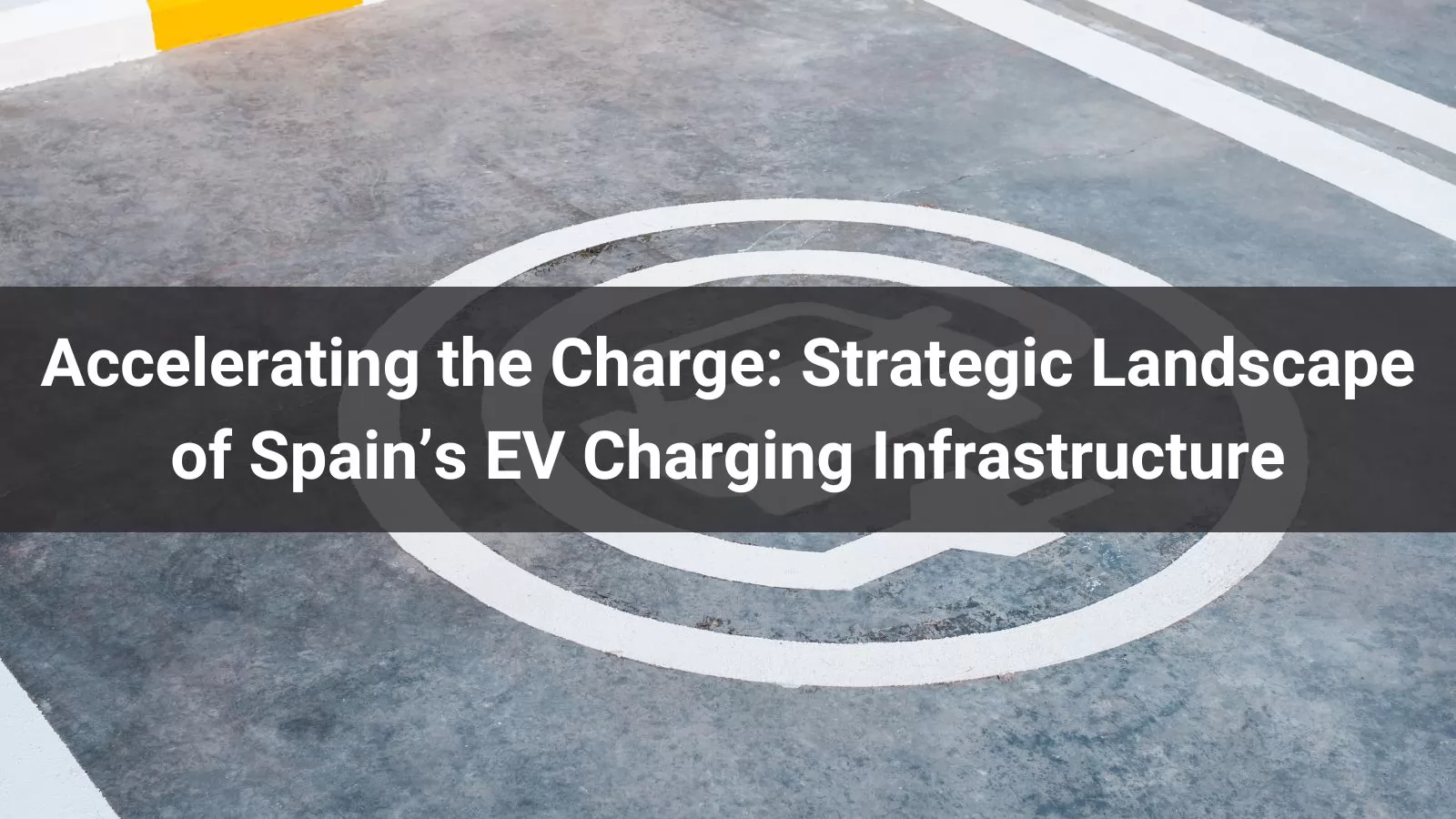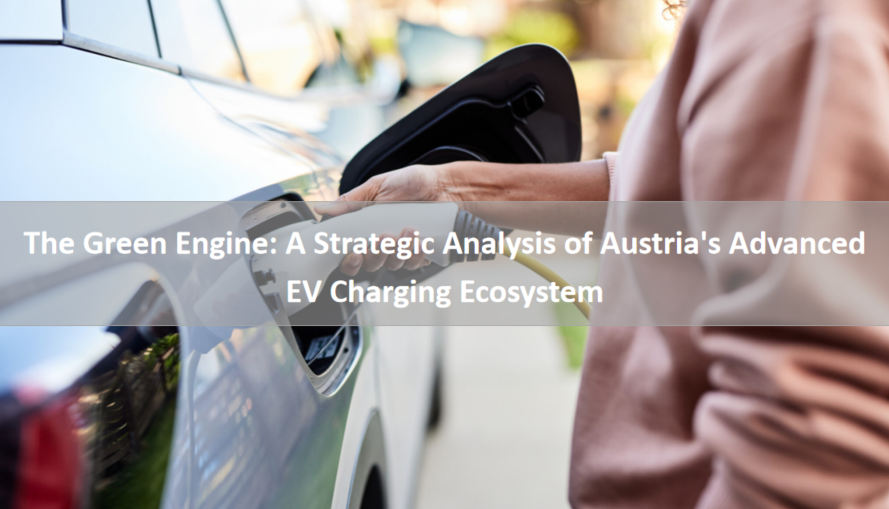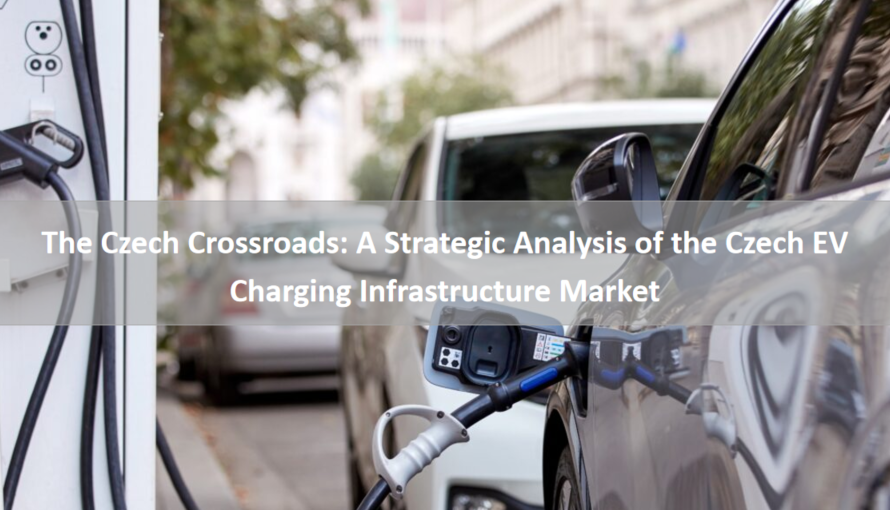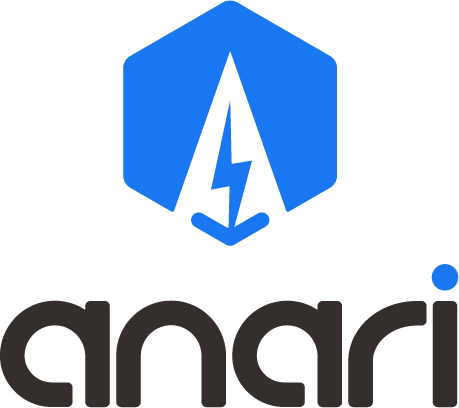
Executive Summary
Spain’s EV charging ecosystem is expanding rapidly under the push of European mandates, national decarbonization targets, and growing EV adoption. With over €1 billion in planned investments and more than 30,000 public charging points as of 2025, Spain is well-positioned to become a southern European leader. However, the country faces structural challenges including uneven regional rollout, long permitting cycles, and inadequate fast-charging coverage on highways. This report provides a comprehensive analysis of the policy frameworks, market dynamics, development progress, and strategic opportunities and barriers shaping Spain’s EV charging market.
Spain is actively implementing EU-level directives under the Fit for 55 and AFIR (Alternative Fuels Infrastructure Regulation) mandates. AFIR requires the installation of at least one 150kW charger every 60 km along the TEN-T core network by 2025—a key driver for infrastructure expansion in Spain’s vast intercity corridors.
Spain’s PNIEC 2021–2030 targets 5 million EVs by 2030, and over 100,000 public chargers to support this growth. It also sets clear objectives for renewable integration, with EV infrastructure viewed as a lever for smart grid and storage solutions.
The MOVES III Plan, launched in 2021, is a cornerstone of EV promotion in Spain. It allocates more than €800 million (extendable to €1.2 billion) in subsidies for:
• EV purchase incentives (up to €7,000 per vehicle)
• Charging station installation (up to 80% subsidy for municipalities and 70% for private entities)
By 2025, over 120,000 private chargers are expected to be co-financed through this scheme.
In 2023, the Spanish government introduced reforms to simplify the permitting process, including:
• 30-day deadline for municipalities to approve installations
• Centralized application portals at regional level
• Incentives for integrating chargers into existing urban plans (parking lots, commercial spaces)
As of 2025:
• Spain has over 350,000 electric vehicles, of which 65% are BEVs.
• Annual EV sales exceeded 120,000 units in 2023, representing 12% of all new vehicle sales.
• Forecasts predict 5 million EVs by 2030, requiring a minimum of 120,000–140,000 public charging points.
• As of 2025, Spain has around 31,000 public charging points.
• Fast chargers (DC ≥50kW) account for ~13% of total stock (~4,000 units).
• Leading operators include Iberdrola, Endesa X, Repsol, Zunder, Wenea, and Tesla.
• Estimated total investment in charging infrastructure by 2030: €3–5 billion, including public and private sectors.
• Concentration: 60% of public chargers are in the regions of Madrid, Catalonia, and Andalusia.
• Highway coverage: Improving but still below AFIR requirements. Key corridors like Madrid-Barcelona now partially compliant.
• Utilization rate: National average is ~18%, peaking in major urban zones and dropping to <5% in rural areas.
Spain’s market is shaped by a mix of utilities, oil companies, and independent CPOs:
| Company | Profile & Focus |
|---|---|
| Iberdrola | National utility; aims for 150,000 chargers by 2030 |
| Endesa X | Strong urban focus; 8,500 points planned by 2025 |
| Zunder | Private CPO; specializes in fast & ultra-fast DC |
| Wenea | Infrastructure developer focused on highways |
| Repsol | Oil major pivoting to e-mobility infrastructure |
| Tesla | Premium fast charging for Tesla and CCS users |
• Smart charging & demand response: Increasingly integrated, especially in public-private residential projects.
• OCPP compliance: Broad adoption of OCPP 1.6 and early pilots of OCPP 2.0.1.
• V2G pilots: Ongoing projects with Nissan, Enedis, and universities in Barcelona and Valencia.
• Renewable energy pairing: Many operators (e.g., Iberdrola) power chargers with solar or wind-sourced PPAs.
• Autonomous communities control permitting, leading to fragmented policies.
• Deployment is fastest in Madrid, Catalonia, and Basque Country; slowest in Extremadura and Castilla-La Mancha.
Spain’s vast geography and tourism-driven mobility create strong demand for ultra-fast corridor charging. Companies like Zunder and Repsol are investing heavily in rest area installations.
As one of the world’s top tourism destinations (85 million visitors annually), Spain can capitalize on destination charging—hotels, coastal towns, airports, and heritage sites.
Rising urban regulations (e.g., Madrid Central, Barcelona ZBE) are forcing delivery, ride-hailing, and municipal fleets to electrify—creating concentrated demand for depot and curbside charging.
With over 75% of Spaniards living in multi-unit dwellings, shared residential charging solutions—backed by MOVES III—are a high-growth segment.
Spain’s high renewable share (~46% of generation) allows EV charging to become a balancing tool for intermittency. Dynamic pricing, V2G, and behind-the-meter storage are major innovation fronts.
Despite national guidelines, many autonomous communities have long permitting cycles (6–12 months). There is a lack of digital standardization for permit applications.
Older infrastructure in rural and island regions (e.g., Canary Islands) hinders fast charger deployment.
Total installed cost for DC fast chargers ranges between €45,000–€100,000, limiting ROI in low-traffic zones.
• Payment platforms and app fragmentation reduce consumer convenience.
• Uptime remains below optimal (<92%), compared to benchmarks in northern Europe (>96%).
Spain’s EV charging ecosystem stands at a transformative junction. With strong policy support, robust market entry from major players, and alignment with EU climate goals, the country is well-positioned for rapid scale-up. However, execution risks—especially regional disparity, bureaucratic inertia, and grid limitations—must be addressed with urgency.
To accelerate momentum, key recommendations include:
• Standardize permitting and introduce a national digital portal.
• Prioritize fast charging along strategic corridors and logistics zones.
• Incentivize residential and semi-public installations in apartment buildings and commercial hubs.
• Enhance CPO interoperability and digital integration to improve user experience.
By focusing on scalability, equity, and innovation, Spain can emerge as a southern European leader in sustainable mobility infrastructure.
Read more:







